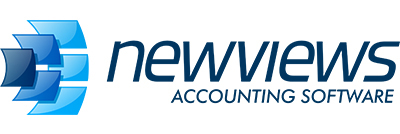What is the NV1 HST Update?
The HST Update is a procedure library containing new versions of all procedures involved in tax calculations (SETUPP, SETUPS, NOTES, TAXP, TAXS and PRTINVS.) Also included are new versions of the PRTPAY, PRTSTMTS and INTEREST procedures. Since these procedures read settings from the SETUPP and SETUPS procedures, changes were required to work with the updated versions. The SETUPP and SETUPS procedures have a new field in which the harmonized tax rate is entered, and the tax status of suppliers and customers can now be set to exempt, taxable under GST, or taxable under HST. Similar changes were made to supplier and customer account notes screens for exceptions to the settings in the SETUP procedures. The NOTES screens for asset/expense and sales accounts have a new field for the HST rate applicable to that account (in addition to the existing GST rate field). As was the case with the GST rate field, the HST rate field will normally not be required unless varying rates of HST are introduced in the future. However, if in the past you have used the GST rate field to program special rates of GST to handle unusual circumstances, then the HST rate field should be set in a similar manner. TAXP, TAXS, and PRTINVS have been updated to calculate either GST or HST, depending on the tax status of the supplier or customer.
The HST and NewViews Accounting Software
On April 1, 1997, the “Harmonized Sales Tax” (HST) came into effect in three provinces: Newfoundland & Labrador, Nova Scotia, and New Brunswick (called the “participating provinces”, or “PP”). As of July 1, 2010 Ontario and British Columbia will join this system. Under this new tax system, the Provincial Sales Tax and Federal GST in these provinces are combined into one tax. It is called a “harmonized” tax because, in most cases, the HST will be applied to all goods and services formerly subject to GST, even though some items may have been exempt from PST.
How Does the HST Affect Businesses and their NewViews Books?
The HST makes things simpler for businesses in those three provinces because it means an end to worrying about whether a good or service is subject to one or both taxes. Also, businesses may claim input tax credits on HST just as they did on GST; a system that has proved to be quite simple. More good news is the fact that the tax returns for HST will be the same as GST, and no new accounts or reports will be required to manage HST. An existing NewViews GST report and accounts are all that are required.
For NewViews users in these provinces the change to HST is very simple. By setting the TAX1 rate to T13 and eliminating the TAX2 rate in both SETUPP and SETUPS, NewViews procedures will calculate the 13% HST on purchases and sales as required. The only bad news is the fact that only five provinces (so far) are participating in the new tax system. This has the potential for causing problems for ALL businesses in Canada.
The problems result from the fact that sales in the three provinces are subject to 13% HST and sales outside the three provinces are subject to 5% GST, regardless (in most cases) of the seller’s location in Canada. This leads to four possible tax situations:
- Sales from a non-PP (like Alberta) to a customer that is also in a non-PP (like Manitoba) are subject to 5% GST.
- Sales from a PP (like Nova Scotia) to a customer that is also in a PP (like Ontario) are subject to 13% HST.
- Sales from a PP (like Ontario) to a customer that is not in a PP (like Alberta) are subject to 5% GST.
- Sales from a non-PP province (like Manitoba) to a customer that is in a PP (like New Brunswick) are subject to 13% HST.
This boils down to the rule that sales INTO a PP are subject to 13% HST, and sales OUT of the PP are subject to 5% GST. Therefore, any business engaged in out-of-province sales must charge the appropriate tax rate depending on the provinces involved.
What Do NewViews Users Have to Do to their Books?
- Run both the SETUPP and SETUPS procedures and set the TAX1 rate to T13. Remove any settings for TAX2 and, if necessary, change the TAX1 description to HST instead of GST.
- Using the NOTES procedure, you should examine, and edit as necessary, any tax rate settings you may have placed in asset, expense, and sales accounts that may be incorrect under the new tax system.
If you, and all of your customers and suppliers are NOT in a participating province:
- No changes are required to your procedures since you will continue to charge (and be charged) 5% GST on all purchases and sales.
If some of your customers and/or suppliers are in a participating province, and the others are not:
- You have a problem, since the current NewViews tax procedures do not have the ability to use differing tax rates based upon the supplier or customer involved. You will need the HST Update to manage the tax properly.
IMPORTANT!
